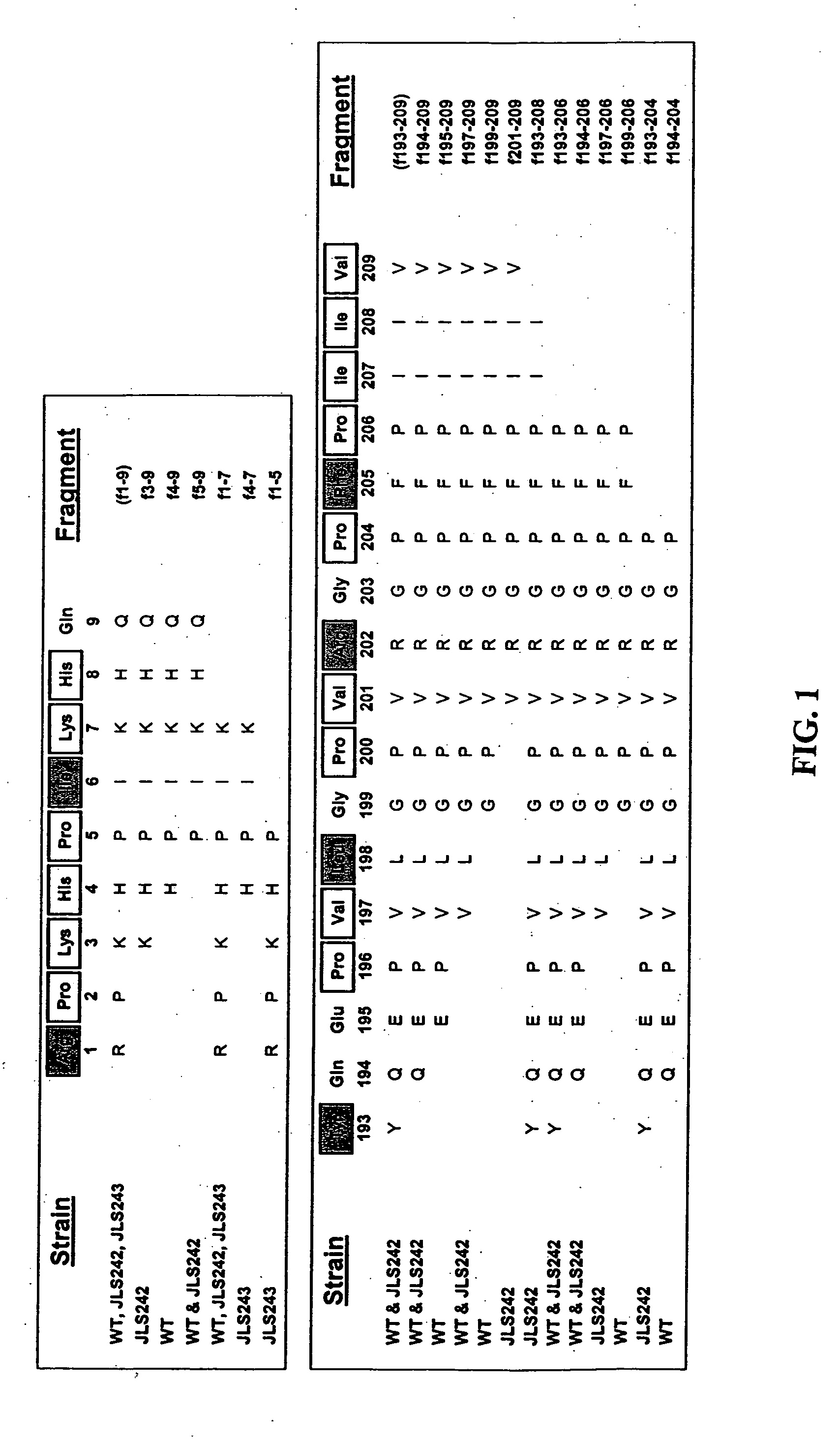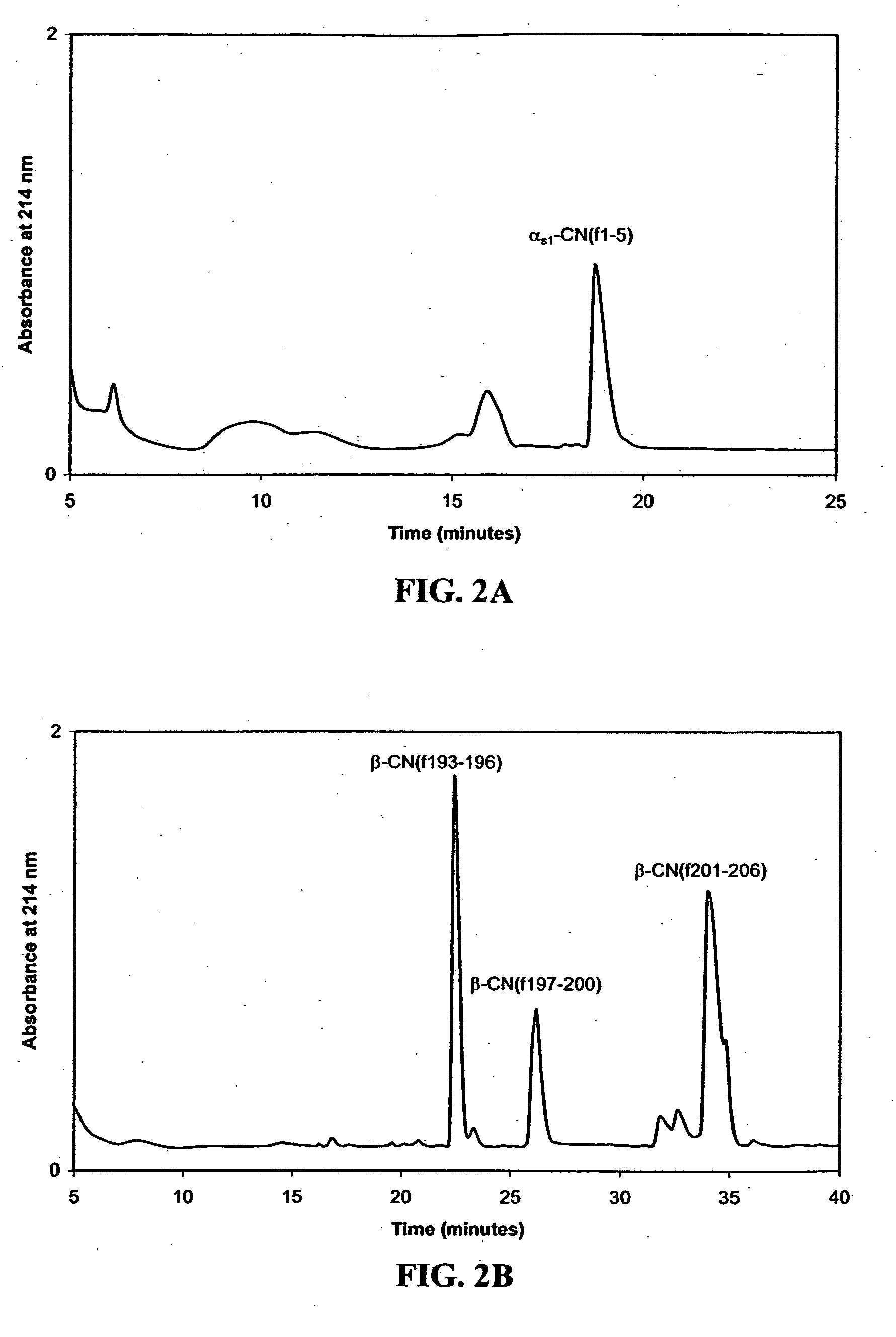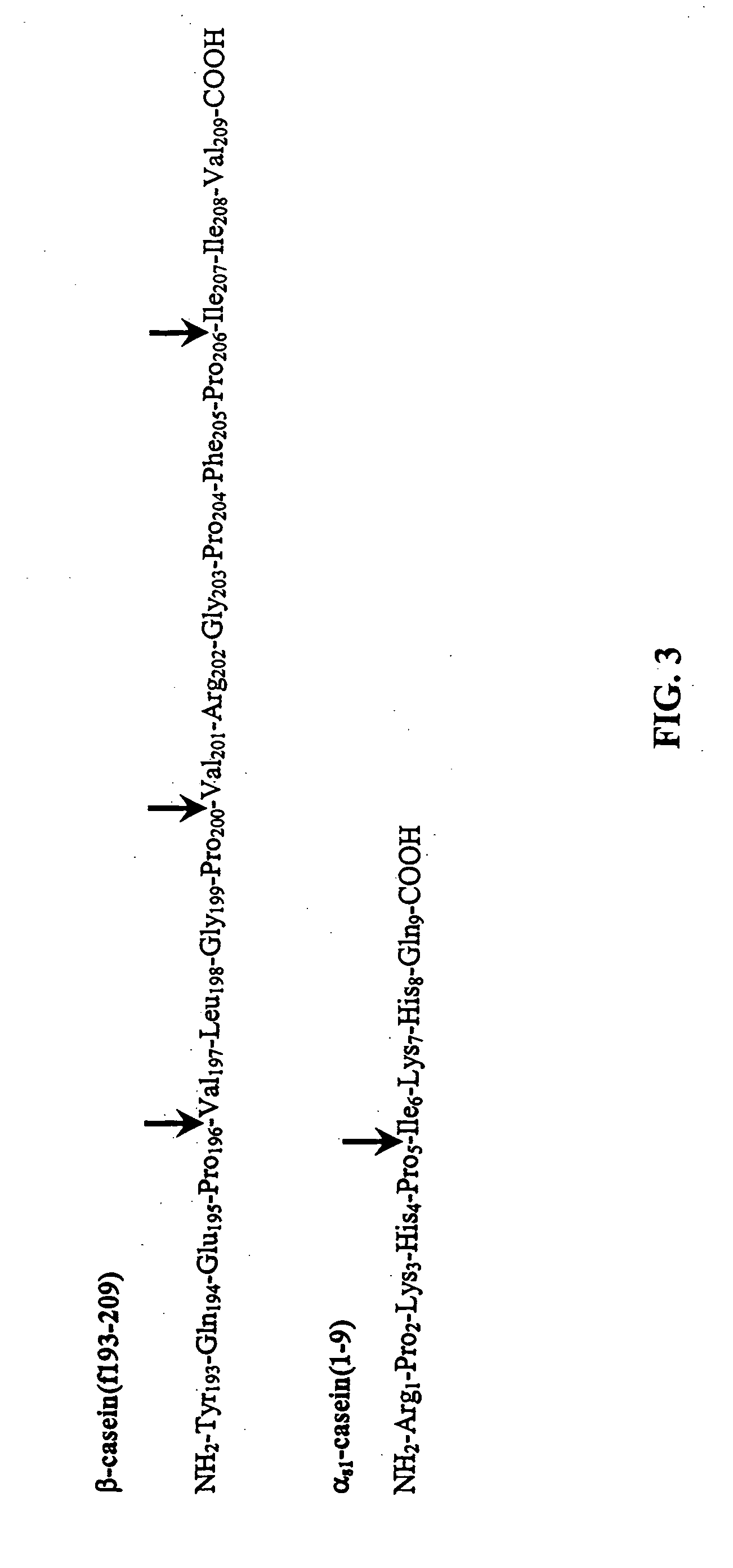Methods and compositions involving endopeptidases PepO2 and PepO3
a technology of endopeptidases and compositions, applied in the field of microbiology and enzymology, can solve the problems of incomplete understanding of the specific enzymes responsible for the ability of this strain to reduce bitterness in cheese, and difficult cleavage of peptides, and achieve the effect of reducing bitterness in food products
- Summary
- Abstract
- Description
- Claims
- Application Information
AI Technical Summary
Benefits of technology
Problems solved by technology
Method used
Image
Examples
example 1
Hydrolysis of Casein Derived Peptides by L. Helveticus Peptidase Deletion Mutants Indicates Presence of Previously Undetected Endopeptidase
A. Growth in AA Defined Media and Defined Media with Peptide Supplements
[0137] To examine effects of peptidase mutations on growth in media requiring hydrolysis of exogenous peptides, growth of L. helveticus and the peptidase deletion mutants (Table 1) were determined in defined media prepared with either αs1-CN(f1-9) or β-CN(f193-209) as the sole source of several essential amino acids (AA). Growth in media not requiring hydrolysis of exogenous peptides to obtain AA was determined in defined media (Christensen, 2000). The defined media is not minimal and is comprised of all free AA as the sole nitrogen source (including the non-essential Ala, Asn, Gln, Gly, Cys and Ser).
[0138] The defined media supplemented with αs1-CN(f1-9) was prepared with all the components of complete defined media except the essential AA contained within this peptide (...
example 2
Identification and Characterization of PepO2
A. Materials and Methods
[0153] 1. Bacterial Strains, Plasmid and Media
[0154]Lb. helveticus CNRZ32 (Khalid and Marth, 1990) and its derivatives were grown in MRS broth (Difco Laboratories, Detroit, Mich.; DeMan et al., 1960) at 37° C. Lc. lactis LM0230 was propagated at 30° C. in M17-glucose broth (Difco Laboratories; Terzaghi and Sandine, 1975). Escherichia coli DH5α (Gibco-BRL Life Technologies Inc., Gaithersburg, Md., USA) and derivatives were grown in LB broth (Sambrook et al., 2001) at 37° C. with aeration. Agar plates were prepared by adding 1.5% (wt / vol) granulated agar (Difco Laboratories) to liquid media. Erythromycin (Sigma Chemical Co., St. Louis, Mo) at 500 μg / ml was added to liquid media or agar plates to select for pJDC9 (Chen and Morrison, 1988) in E. coli.
[0155] 2. Screening of Lb. helveticus CNRZ32 Genomic Library
[0156] A previously constructed genomic library of Lb. helveticus CNRZ32 in E. coli DH5α (Nowakowski et al...
example 3
Identification and Characterization of PepO3
[0184] A draft-quality genome sequence for L. helveticus CNRZ32 was obtained and screened for genes encoding additional proteolytic enzymes. As is shown in Table 3, that effort revealed the CNRZ32 genome includes 8 ORFs encoding 3 known and 5 putative endopeptidases. The diversity of endopeptidases in CNRZ32 is of considerable interest because these enzymes play a key role in the hydrolysis of bitter peptides in bacterial-ripened cheeses, and high debittering activity is a known attribute of this strain (Bartels et al., 1987). For this reason, endopeptidases were selected as the first targets for our functional genomics studies in CNRZ32. Since glycopeptides are not known to make any contribution to bitter flavor defect in cheese, efforts were directed toward the other 3 novel CNRZ32 endopeptidase genes: pepE2, pepF, and PepO3.
[0185]Lactobacillus helveticus CNRZ32 pepE2, pepF, and PepO3 genes were isolated by PCR using primers designed f...
PUM
| Property | Measurement | Unit |
|---|---|---|
| pH | aaaaa | aaaaa |
| pH | aaaaa | aaaaa |
| temperatures | aaaaa | aaaaa |
Abstract
Description
Claims
Application Information
 Login to View More
Login to View More - R&D
- Intellectual Property
- Life Sciences
- Materials
- Tech Scout
- Unparalleled Data Quality
- Higher Quality Content
- 60% Fewer Hallucinations
Browse by: Latest US Patents, China's latest patents, Technical Efficacy Thesaurus, Application Domain, Technology Topic, Popular Technical Reports.
© 2025 PatSnap. All rights reserved.Legal|Privacy policy|Modern Slavery Act Transparency Statement|Sitemap|About US| Contact US: help@patsnap.com



